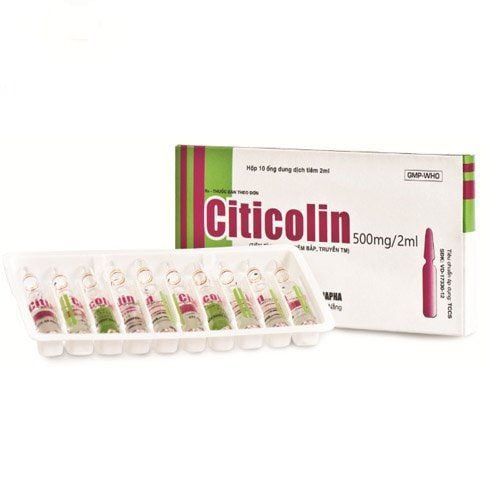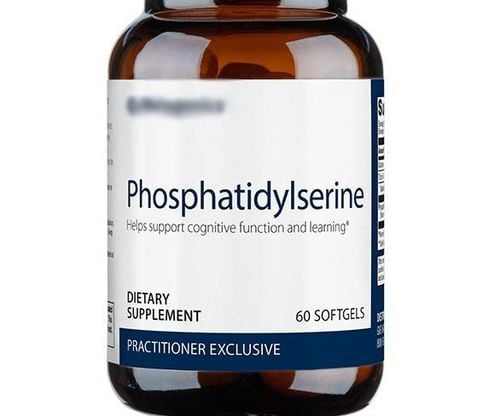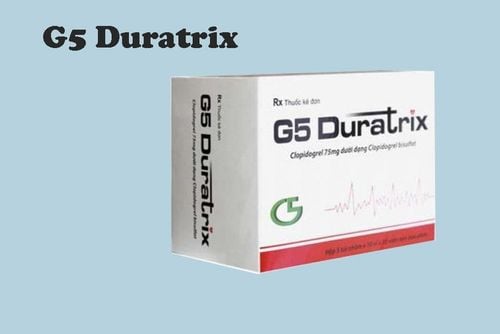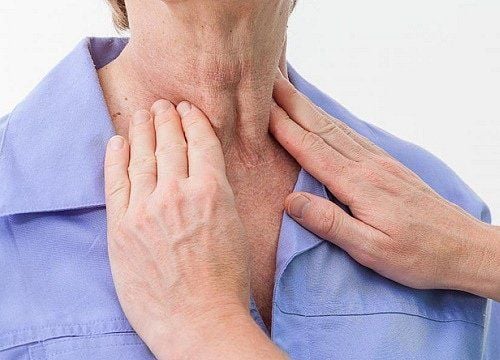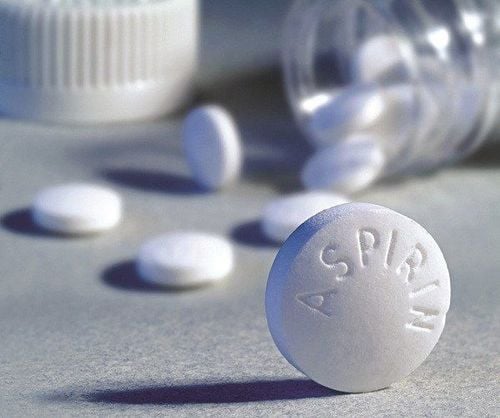This is an automatically translated article.
After a brain stroke, early intervention, properly, persistently and continuously for the patient is really important so that the patient can soon return to a normal life. The article below will provide more insights into life after a stroke and what to expect in recovery?
1. How long does it take to recover from a stroke?
According to the World Stroke Organization, cerebrovascular accidents affect more than 14 million people worldwide each year. It is the second leading cause of death in people aged 60 years and over and the fifth leading cause of death in people aged 15 to 59 years. Many stroke survivors suffer from some type of disability following a stroke that affects their quality of life, taking a financial and psychological burden on both them and their carers. According to experts, the best time to recover from a stroke begins as soon as possible because the time to see the most progress will occur in the first 6 months.
Several factors can cause a stroke, but for the most part, they are sudden and very sudden. A stroke is more likely to happen if someone with health problems or a genetic predisposition has a heart attack. Here are the different types of stroke that provide doctors with the information they need to find the best treatment for each patient:
Mild Stroke: Also known as a Transient Ischemic Attack (TIA) ), which occurs when blood flow to the brain is briefly interrupted. This causes minor symptoms and side effects that should go away within 24 hours. People who undergo a TIA are at increased risk of having a stroke within 48 hours and should seek immediate medical attention. Ischemic stroke: This is the most common type of stroke that occurs when the vessel that supplies blood and oxygen to the brain is blocked. This prevents brain tissues from receiving oxygen and nutrients, leading to the death of brain cells within minutes. Hemorrhagic stroke: It accounts for 13% of strokes and occurs when weakened blood vessels burst and bleed to surrounding areas of the brain, depriving brain cells of nutrients and oxygen. Pressure from the blood can build up, leading to irritation, swelling, and further brain damage. How long it takes to recover from a stroke depends on many different factors, such as the size and location of the stroke, as well as your age and overall health before the stroke. The speed of treatment also has an effect on the outlook for recovery.
In terms of size, if the stroke is mild, brain damage is likely to be minimal and therefore recovery is usually quicker. When a stroke is considered severe (usually measured by a high score on the NIH Stroke Scale), the recovery process can be longer and requires intensive work.
In terms of location, a stroke can affect many different areas of the brain. This complicates the outlook for recovery because different areas of the brain control different functions. Therefore, depending on the area of the brain damaged, the side effects will be different.
For example, a stroke in the left hemisphere of the brain can impair language ability (since the language center is located in the left hemisphere of the brain in most people). But an individual with a right hemisphere stroke can have completely different secondary effects.
As you can imagine, differences in stroke size and location have profound implications for individual stroke recovery time. Also, your age and overall health before your stroke can affect recovery time. In general, the younger, healthier and more active you are before your stroke, the quicker your recovery will be.

Đột quỵ do thiếu máu cục bộ thường gặp ở người lớn tuổi
2. Life after a stroke: What happens in recovery?
It's worth repeating that stroke recovery timelines look different for everyone.
For example, even if two people have a stroke in the same brain region, the recovery time can still be different. One left hemisphere stroke survivor may struggle with being completely unable to speak, while another may just struggle with finding words again. Recovery times will vary greatly between such different impairments.
With that said, it can be helpful to understand some stroke recovery timeline patterns. That way, you know what to expect on the road to recovery.
* Day 1: A stroke is treated
A stroke is a medical emergency. Over time without intervention, more and more brain cells become deprived of oxygen-rich blood, leading to brain damage. Prompt treatment is needed to stop a stroke and save the person's life.
Initially, you will most likely be admitted to the emergency room to stabilize your condition. Once the type of stroke (ischemic versus hemorrhagic) has been determined, treatment can be initiated. This may include medications that dissolve blood clots or surgery.
Once a stroke has been treated, rehabilitation begins immediately. This often means starting rehabilitation right from the hospital bed. Rehabilitation begins quickly to take advantage of the brain's highly neuroplastic state, as well as to minimize the muscle atrophy common to hospital stays.
Neuroplasticity refers to the ability of the brain to roll up on its own. This mechanism allows healthy parts of the brain to take over damaged functions after a stroke. Stroke recovery revolves around this process.
In the early stages of recovery, neuroplasticity is amplified by spontaneous recovery. This refers to improvements that occur suddenly, often in the early stages of recovery when the brain is trying to heal quickly after an injury.
* Weeks 1-3: Discharge from the hospital
Depending on the severity of your stroke and how many medical complications occurred, you will likely be in the acute care hospital for a period of time from 1-3 weeks. During your stay in the hospital, you will work with a strong team of specialists who will assess your condition and any side effects you may suffer, such as physical or cognitive impairment. .
Your medical team will pay attention to whether you are able to take care of yourself and whether you are doing enough activities of daily living (such as going to the bathroom, dressing and walking distances). short) or not.
Before you leave the hospital, your rehabilitation team will help develop a rehabilitation plan for you that will include recommendations for the next step in your rehabilitation.
Based on your ability, you can continue your rehabilitation at the following locations after discharge:
Inpatient Rehabilitation Facility : If you can benefit from (and endure) get) participation in 3 hours of therapy per day, you can continue your recovery in the inpatient rehabilitation unit. To be accepted into one of these facilities, you need to have significant functional impairments, but also show potential for improvement, and have support when you leave the hospital if you need it.
Subacute Rehabilitation Facility: If you require a lower level of therapy with 1-2 hours of therapy per day, you can continue your rehabilitation in a subacute rehabilitation facility. This would include something like a skilled nursing facility.
Outpatient treatment: After discharge from a hospital or rehabilitation facility, many patients continue their treatment by going to the clinic as needed.
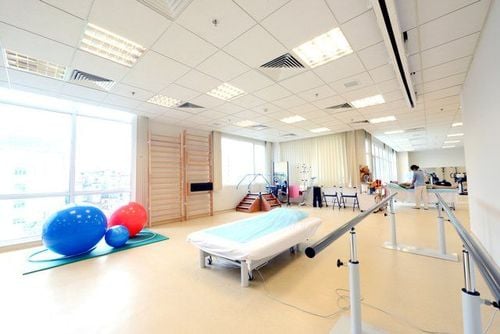
Bệnh viện Vinmec có phòng tập phục hồi chức năng thần kinh sau tai biến, đột quỵ cho bệnh nhân
* 1-3 months: Noticeable recovery will occur
During the first 3 months of your recovery you will see significant improvements in your progress. The brain remains in a state of high plasticity, which means that rehabilitation has a greater effect during this time. Spontaneous recovery is also still possible during this initial time.
After the first 3 months of your stroke recovery schedule, the results usually slow down and lead to stabilization. At this point, most survivors return home to continue their rehabilitation both on their own and with outpatient treatment.
Fortunately, while the plains can slow things down, that doesn't mean the recovery is over. In fact, recovery can continue for years as long as the survivor continues to rehabilitate.
Survivors should continue physical therapy, occupational therapy, and speech therapy for as long as necessary to regain lost skills.
It is important to stay active at home between outpatient sessions. This will provide the brain with the consistent stimulation it needs for self-healing.
* 6 months: Improved gait in most stroke survivors
As your stroke recovery progresses, you will hit your own milestones in your own time.
A common milestone many survivors look forward to is regaining the ability to walk (if your ability to walk is impaired due to a stroke). Fortunately, if you participate in regular rehabilitation, the outlook is positive after 6 months.
Studies show that about 65-85% of stroke patients will learn to walk independently after 6 months of rehabilitation. For people recovering from a major stroke with severe effects, recovery can take longer.
It is important to note that, at this point, spontaneous recovery may have ended. For such results, it is imperative that you participate in a regular rehabilitation program to continue your recovery.
Fortunately, lifelong rehabilitation is possible. As long as the person continues to rehabilitate, recovery can continue as well.
* 2 Years: Recovery looks increasingly different for everyone
At the 2 year mark, it's impossible to say where any of the survivors will be on their recovery journey. Some may have fully recovered while others are still pursuing rehabilitation.
A comforting statistic is that, of stroke survivors unable to walk without assistance at 6 months, 74% will be able to walk at 2 years. This is a great reason to continue participating in rehabilitation.
*5 years and beyond: Rehabilitation is possible
As the years go by, continued recovery looks different to everyone. It all depends on your unique side effects and how consistently you participate in rehabilitation.
One study followed stroke survivors for 5 years and found that “functional and motor activity levels at 5 years after stroke were comparable to those measured at 2 months”. While this may sound like bad news, there is an important lesson you can learn from it.
The researchers noted an initial benefit during the first 2 months of recovery on the intensity of inpatient rehabilitation. It is likely that, after discharge from inpatient rehab, many of the survivors in that study stopped participating in rehab altogether.
Therefore, if you want to continue to see results for months and years after your stroke, you must continue to have good rehabilitation after your inpatient discharge. This is where home therapy programs can really come in handy, especially since insurance will rarely cover formal therapies at a clinic far from a stroke.
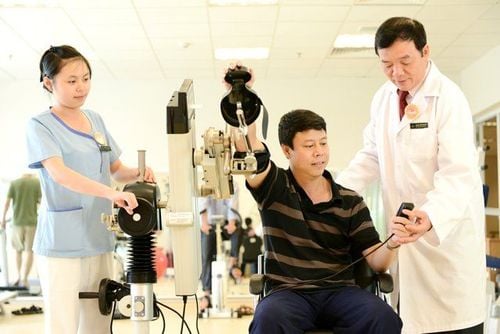
Nếu bệnh nhân được chăm sóc tốt sau đột quỵ có thể phục hồi một phần hoặc toàn phần
3. Care and rehabilitation after stroke
Stroke rehabilitation is an important step in the recovery process. It can begin as early as 24 or 48 hours after a stroke, or as soon as the patient is considered medically stable, and last for weeks, months or even years. There are many types of aftercare procedures needed for patients with post-stroke complications. Here are the most essential steps to support stroke rehabilitation.
3.1. Lifestyle changes It is important to make changes at home to help stroke patients function better and prevent injury. These changes may include moving items for easy access, widening aisles and doors, installing grab bars in bathrooms, and placing non-slip mats or mats to prevent patients from falling. While doctors can advise on common risks and preventive measures, it's best to observe stroke patients in a home setting and make the changes that work best for the home. your and your patient's needs.
3.2. Diet After a stroke, maintaining healthy habits can be challenging. There can be a risk of undernutrition or not getting enough nutrients from your diet, leading to unhealthy weight loss and slowing your recovery. Poor nutrition can lead to many stroke complications. Typically you will experience neurological symptoms such as difficulty swallowing or swallowing, as well as limited arm and hand movement, which can limit your ability to use eating utensils such as knives and forks. . Cognitive deficits can also interfere with your ability to eat properly by causing you to forget to eat regularly. A stroke can also affect the part of the brain responsible for appetite, reducing your desire to eat.
It is important to follow a diet low in fat and sodium and high in fruits and vegetables to avoid other risk factors for another stroke, such as high cholesterol, blood pressure and fat in the body. It's also possible that some foods may interact poorly with medications you start taking after a stroke, so be sure to check with your doctor or pharmacist before starting a new nutrition program. . Every patient has different requirements, so it's important to consult your doctor about your eating habits on a regular basis.
When choosing protein sources, choose varieties such as fish or lean meat and low-fat poultry. Use spices, minus salt, for extra flavor without increasing your sodium intake.
You can add variety to your meals by choosing vegetarian protein sources including beans, peas, nuts and seeds, with the added benefit of providing healthy fats like omega-3s. If you're going to rely on vegetarian sources of protein, be sure to ask your dietitian how to put them together so you get all the essential amino acids.
When looking for grains, always choose the least processed varieties. Whole grains, such as oatmeal and brown rice, are the best possible choices. Look for low-fat or fat-free dairy products, or choose dairy-free, calcium-rich foods. Fruits and vegetables have colors that represent the nutrients in them, so be sure to eat the rainbow to get the most balanced meal possible.
Cut food into small pieces or choose softer foods to chew less. If you have difficulty with weak hands or arms, you can try using a specially designed device. If you have trouble swallowing, talk to your doctor or speech therapist, as the condition is often treatable.
A healthy diet plays an important role in your recovery from a stroke. Getting enough nutrients each day can help maintain energy levels and reduce risk factors for a stroke or other heart event. For this reason, it's important to reduce your intake of sodium, saturated fats, trans fats, and added sugars, as well as make sure you eat plenty of fruits and vegetables. These steps can help minimize the appearance of high blood pressure, high cholesterol, and unhealthy fat levels in the body, thereby reducing your overall future stroke risk.

Một chế độ ăn uống lành mạnh rất tốt cho bệnh nhân phục hồi chức năng sau đột quỵ
3.3. Stroke prevention and rehabilitation Medicines and therapies to support the recovery of stroke survivors. When the patient's condition is stable, doctors will prescribe specific treatment plans to restore function and prevent stroke recurrence. These typically include:
Anticoagulants: These are given to patients who have had an ischemic stroke or a transient ischemic attack. Dosage will depend on the severity of the stroke. Antiplatelet drugs: These medications prevent blood clotting and are often combined with anticoagulants to treat ischemic strokes and transient ischemic attacks. Medicines to treat other health conditions: In cases where underlying conditions contributed to the initial stroke, the patient will be given medication to address these health problems. They are often used to control cholesterol, atrial fibrillation, or diabetes. Physical therapy: Mobility is often affected after a stroke. Physical therapy helps restore basic movements such as walking, standing, grasping, and transitioning from one movement to another. Speech therapy: This helps patients improve their verbal communication and speech understanding after a stroke. Occupational therapy: This helps restore functional skills involved in performing everyday tasks such as bathing, eating, and cooking. Cognitive Restoration: This is used to restore affected cognitive functions related to memory and attention. It also focuses on addressing the psychological disturbances that can be caused by a stroke. Exercise and diet: Patients who have had a stroke due to unhealthy lifestyle factors should incorporate regular exercise and a balanced diet into their routine.
Please dial HOTLINE for more information or register for an appointment HERE. Download MyVinmec app to make appointments faster and to manage your bookings easily.
References: webmd.com, flintrehab.com, saebo.com




